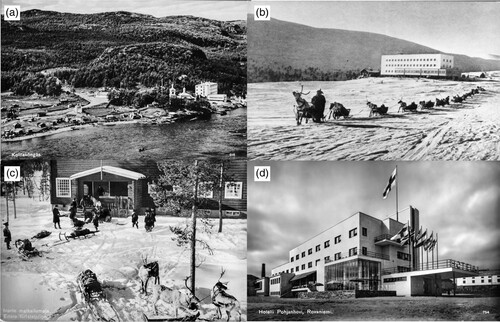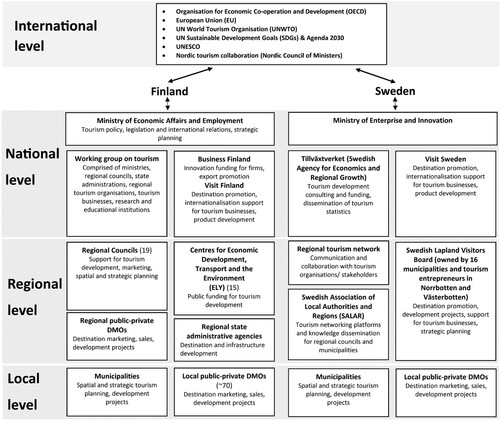Figures & data
Table 1. The TPSNE framework.
Figure 1. Main tourist destinations in Lapland and Norrbotten.
Source: Authors.

Figure 2. (a) The functionalist hotel in Borisoglebsky (Kolttaköngäs in Finnish)/Petsamo (right) stood in stark contrast to the Orthodox church and the Skolt Sámi village. (b) Reindeer sleds were the most common transport mode for travelling the last few kilometres to the Pallastunturi hotel in the winter. (c) The tourist station in Inari is an example of the twentieth-century neo-national romanticist building style of Lapland’s tourist accommodation. (d) In the late 1930s, the Pohjanhovi hotel in Rovaniemi was one of the most modern buildings in Finland.
Source: Lapin Maakuntamuseo (Citationn.d.). Published with permission.

Table 2. Multispatial metagovernance of tourism in Lapland and Norrbotten from 1870 to 1945.
Table 3. Multispatial metagovernance of tourism development in Lapland and Norrbotten from 1945 to 1990.
Figure 3. Multilevel governance in Lapland and Norrbotten.
Source: Authors.

Table 4. Multispatial metagovernance of tourism development in Lapland and Norrbotten from 1990 to present.
